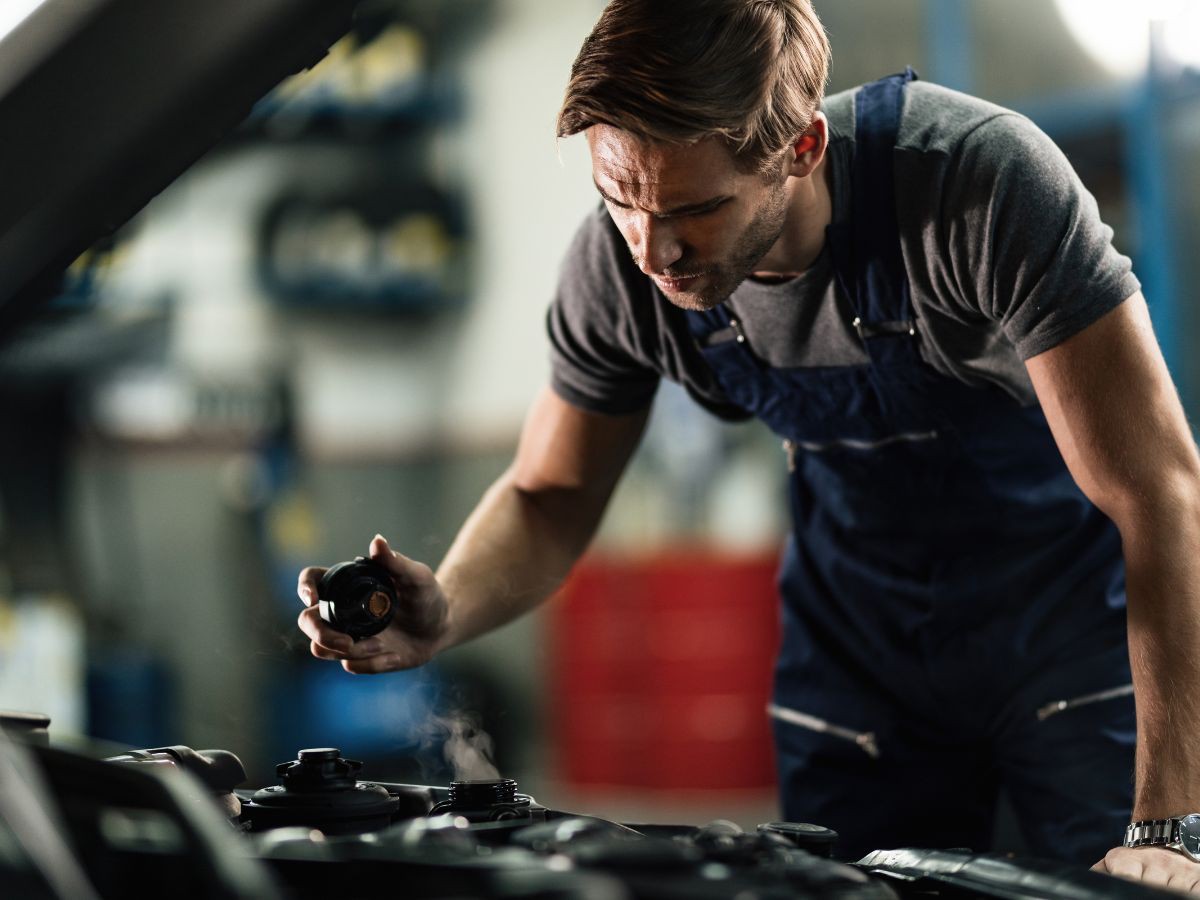
6 Signs Your Radiator Cap Is Bad
The
radiator cap may appear to be a straightforward component, but it serves more
purposes than most people realise! How to identify a defective radiator cap
To
operate and prevent overheating, your car needs coolant. The last thing you
want is for your engine to shut off from overheating because this could cause
permanent harm. The radiator cap is one of many various parts that make up the
cooling system, but it is also one of its most crucial parts.
When
searching online for car garages in Reading and scheduling an
appointment with a mechanic, it is advised to have a yearly health check along
with a full service performed on your vehicle to prevent being in such a
predicament.
The
radiator cap is one of the most crucial parts of your cooling system, but
unless you're having problems, you probably haven't given it much thought.
How
can you tell when a radiator cap needs to be replaced and what function does it
actually serve? We'll list all the details you need right here. Let's look at
the warnings first.
If
you are currently suffering coolant leaks, have your car repair fix them before
arranging your upcoming MOT testing service. The most common indication
of a damaged radiator cap is coolant leakage underneath the radiator.
Additionally, the radiator's top may have dried-out white streaks flowing from
it. Your radiator cap may become defective if your coolant level is low.
Here
is a more thorough list of the six signs of a damaged radiator cap:
1. Coolant Leak
Coolant puddles
under your car are the most obvious indication that anything is wrong. Because
the cooling system in your car is sealed, everything and anything that goes in
is meant to stay in. You should look into the issue further if your car has a
coolant leak because it can be your radiator cap. Make an appointment with a
qualified technician by conducting an internet search for garages in Reading and request a mechanic to carry out a full investigation of the coolant leak.
2. White Streak on Radiator
Just because your radiator cap is dripping coolant, it doesn't necessarily
indicate that it's making it to the ground. If the leak isn't severe enough,
the coolant may burn off the radiator before it begins to drip from the bottom
because the radiator cap is located at the top of the radiator. If that occurs,
the radiator will still have white streaks where the coolant was burned out.
3. Engine Overheating
Your
radiator cap performs a number of functions to maintain the proper operating
temperature for your engine. Just be aware that a damaged radiator cap can
result in an overheating engine; we'll go into more detail about how it
functions later in the post. A MOT history checker claims that this is a
frequent cause of MOT test failure.
4. Low Coolant
Since your
car's cooling system is sealed, if there was enough coolant one day in
your car, then there should be enough the next. If you discover that
you need to continuously be adding coolant, your engine is either burning
coolant or leaking coolant. It's on a journey! Check your radiator cap to check
if that is where the coolant is escaping from if you constantly have low coolant
levels.
5. Overflowing Reservoir
When the coolant reaches a particular temperature, it produces enough pressure
to activate the radiator cap pressure valve, which returns the coolant to the
reservoir. However, a malfunctioning radiator cap may overfill the reservoir
and cause coolant to leak out of the overflow hose by returning too much fluid
there.
6. Steaming Engine/Radiator Cap
When everything is operating as it should, the radiator cap does a
superb job of applying pressure to the system to raise the boiling point of the
coolant. However, if your radiator cap is broken, your coolant won't heat up
properly and could even begin to boil. As the coolant boils out of the system,
there will be a lot of steam coming from your engine or your radiator cap.
What the Radiator Cap Does
The
radiator cap may be the cooling system's most underappreciated but also most
amazing component. The radiator cap serves four purposes, and if any one of
them isn't performing properly, you'll experience issues. These are those tasks:
·
To pump up the cooling system's pressure
·
Surplus pressure is released into the reservoir.
·
Sealing the cooling system
·
Uses a vacuum valve to direct coolant to the radiator.
Your
radiator cap pressurises the system first. The coolant's boiling point rises as
a result of this pressure. This explains why coolant that is leaking from the
radiator cap may burn off on the engine but not inside the system. The coolant
will begin to boil without a pressurised system, making it difficult for your
engine to properly cool down.
Secondly,
while some pressure might be beneficial, too much can be harmful. Hoses, the
cap itself, and any other weak points in the system might all blow up under
excessive pressure. The reservoir contains an open surplus coolant tube that can
safely release the pressure, and the radiator cap has a pre-set position at
which it opens to transmit the extra pressure there.
Thirdly,
the system is sealed by the radiator cap. It's really simple; after the cap is
off, you can add coolant directly to the radiator. However, you cannot have an
opening while the engine is running because doing so will cause air to enter
the system, which is bad.
Finally,
the coolant contracts as it begins to cool, lowering the coolant level in the
radiator. To maintain the proper level, the vacuum valve on the radiator cap
adds extra coolant to the radiator.